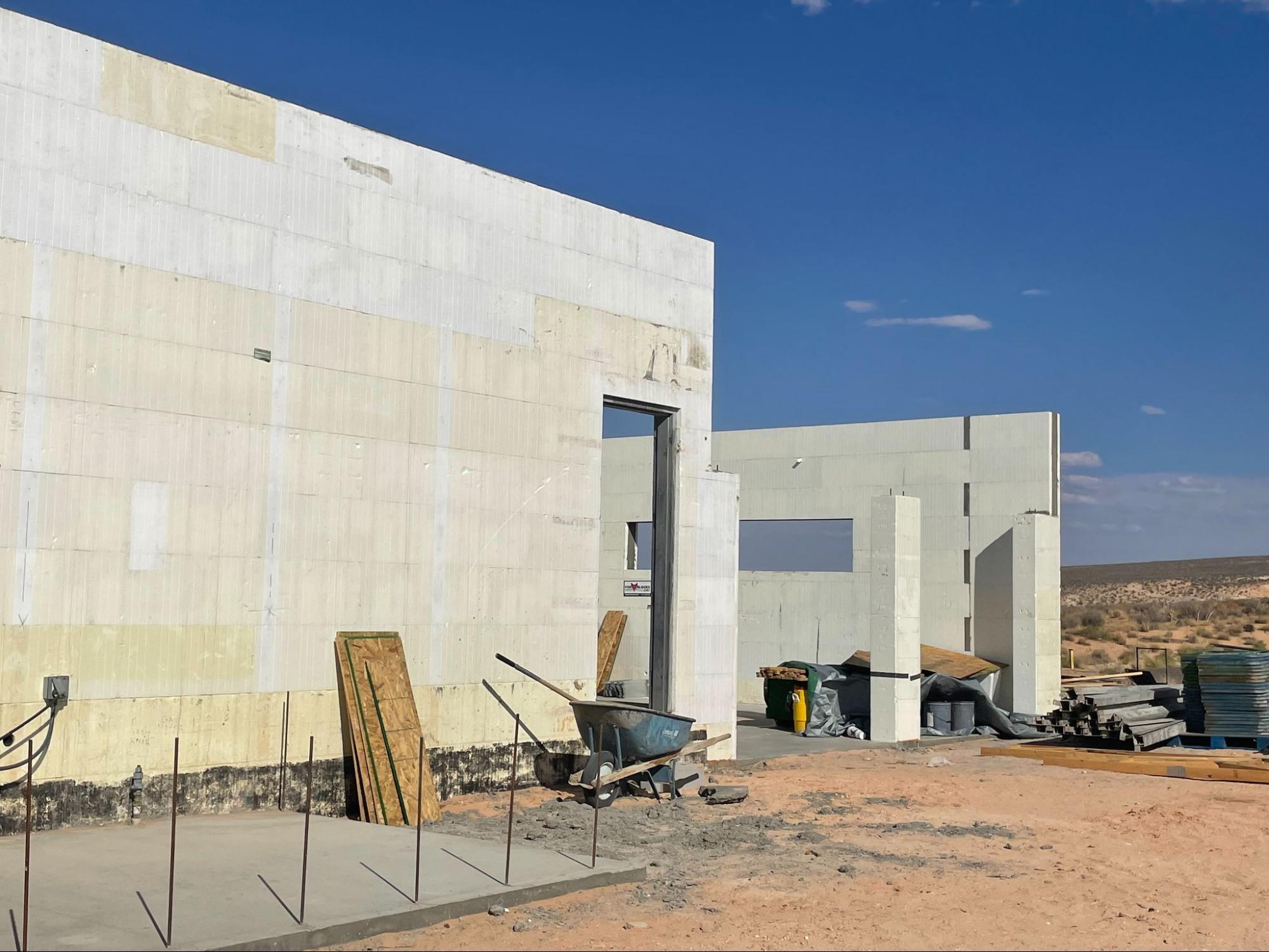
3 Problems with Autoclaved Aerated Concrete Blocks

When considering concrete block construction, you are sure to come across autoclaved aerated concrete blocks. These blocks are much lighter than traditional concrete blocks and have some great properties that make them an attractive choice for building material.
Autoclaved aerated concrete blocks certainly have their place, and you should know more about their advantages, disadvantages, and alternatives before deciding to use them.

What Are Autoclaved Aerated Concrete Blocks?
Made from fine aggregates, cement, and an expansion agent, autoclaved aerated concrete blocks are lightweight versions of concrete blocks. The expansion agent causes the “mix” to expand and rise just like baking bread in the oven.
Once the blocks are shaped, the forms are removed and the block is sliced before being placed in an autoclave. The autoclave applies heat and pressure to the blocks for at least 12 hours to strengthen the block for use in construction.
A finished autoclaved aerated block contains more than 80% air. After the concrete sets, the blocks are molded into perfectly dimensioned units for use on construction sites.
The Advantages of Autoclaved Aerated Concrete
Autoclaved aerated concrete (AAC) blocks bring many unique advantages to buildings including durability, energy efficiency, and safety.
These advantages are important to weigh against costs and downsides but make this type of concrete an important option for any new construction.
Strength and Insulation
Autoclaved aerated concrete combines a wall’s structural elements and insulation into one easy-to-construct material. The heat and pressure that the AAC blocks are exposed to during construction gives them a great deal of inherent strength. The lightweight properties of these blocks also make them easy to cut and shape as needed. Screws and nails can be used in these blocks easily, as well.
Naturally Resistant
Concrete naturally resists water, insects, mold, and mildew giving it an advantage over other traditional building materials. Fire resistance of these blocks is also excellent with many eight-inch thick blocks capable of a four-hour or longer fire rating.
Energy Efficiency
The tight dimensional stability of AAC blocks also allows for a tighter building envelope, to keep air from leaking in or out of the building. The R-values of these blocks are comparable to conventional frame walls but have the added benefit of thermal mass. This thermal mass helps to slow down the effects of temperature swings outside from affecting the change of indoor temperatures, which reduces energy usage. Many autoclaved aerated concrete buildings are eligible for LEED credits.
The Disadvantages of Autoclaved Aerated Concrete
Autoclaved aerated concrete blocks have some attractive advantages, they also have three big disadvantages that should be considered before using them in a building project.
Training Required for Installation
Even with more than 80% of the panel being air, large autoclaved aerated concrete panels can be quite heavy and require a crane for installation. Installers must be knowledgeable on working with these panels to ensure that installation is done correctly.
Proper mortar techniques must be used to ensure the blocks are combined together to form a stable structure. AAC blocks also typically have half the compressive strength of traditional concrete blocks so it is critical that the blocks are used in the correct applications.
Blocks Are More Expensive
Due to the aerating agents used, autoclaved aerated concrete blocks are more expensive than traditional concrete blocks. While lightweight, the blocks must also be transported from the manufacturing site to the construction site. With transportation costs increasing, the cost of building with these blocks goes up too.
Sensitivity to Water
One of the biggest disadvantages of autoclaved aerated concrete blocks is the ability of the block to stand up to water over time. The aeration process creates millions of tiny holes or pores inside the concrete block. Water can be retained inside these pores so any finishes applied to the wall must be able to breathe.
If water trapped in these pores freezes and expands, cracking can occur which will damage the structure. Water absorption also weakens the strength of the wall, even if cracking does not occur. Autoclaved aerated concrete blocks must be protected from aggressive environments and are typically not a good candidate for below grade construction.
Insulated Concrete Forms: A Better Alternative
Insulated concrete forms (ICF) are a good alternative to traditional and autoclaved aerated concrete block construction. Consisting of two sheets of high performance insulation held together with a proprietary tie system, ICF blocks are lightweight foam blocks that can be stacked on site to build almost any type of building. After the blocks are stacked, rebar is placed in the hollow gap between the foam panels. Concrete is then poured into the space and allowed to set.

The resulting steel reinforced concrete structure has all of the usual benefits of concrete structures without many of the downsides. ICF structures have more thermal mass than autoclaved aerated block structures and a much higher R-value, too. ICF block construction can be performed by laborers with minimal training. One ICF standard block, weighing about 7 lbs., provides 5.3 sq.ft. of wall area per block. Since local concrete can be used, the costs of ICF construction tend to be lower also.

Find the Best Autoclaved Aerated Concrete Block Alternative with Fox Blocks ICFs
ICF blocks from Fox Blocks can stand up to tough environments as well. Fox Blocks are routinely used in the construction of storm shelters because of their ability to take a beating. With the use of a waterproofing membrane, Fox Blocks are great for pool or below grade construction as well.
To learn more about Fox Blocks and the advantages of ICF construction, reach out to their experts today.